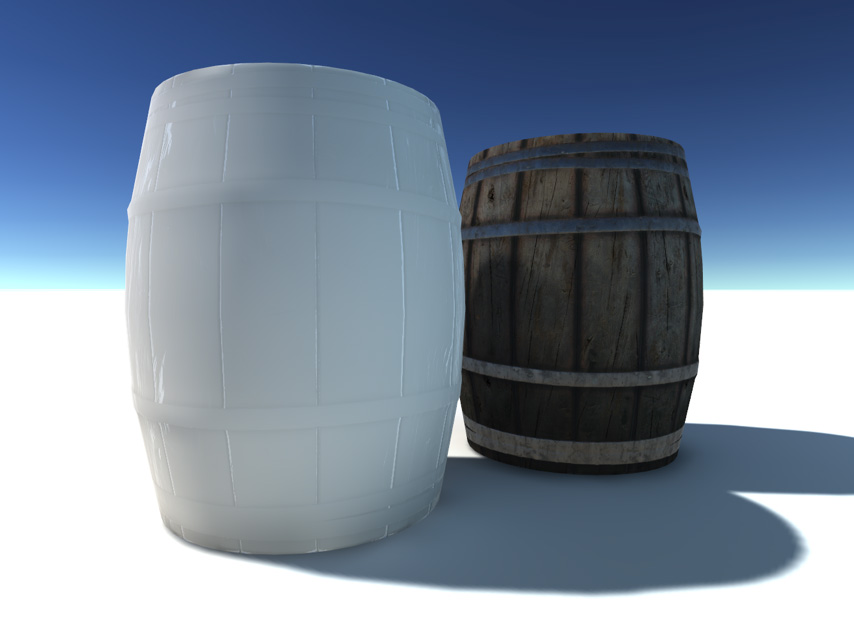Directional Mode
There are two Directional Modes for lightmapsA pre-rendered texture that contains the effects of light sources on static objects in the scene. Lightmaps are overlaid on top of scene geometry to create the effect of lighting. More info
See in Glossary: Directional and Non-Directional. Both modes are compatible with realtime lightmaps from Unity’s Realtime Global IlluminationA group of techniques that model both direct and indirect lighting to provide realistic lighting results. Unity has two global illumination systems that combine direct and indirect lighting.: Baked Global Illumination, and Realtime Global Illumination (deprecated).
See in Glossary system, and baked lightmaps from Unity’s Progressive LightmapperA tool in Unity that bakes lightmaps according to the arrangement of lights and geometry in your scene. More info
See in Glossary. The default mode is Directional.
When you bake a Directional lightmap, Unity generates two lightmap textures. One texture stores information about the intensity and color of the lighting received across the target surface. This is identical to the Non-Directional lightmap. The other texture stores the dominant light direction, along with a factor describing how much of the total light received comes from that dominant direction.
The barrels in this image have baked Non-directional lightmaps.

The barrels in this image have baked Directional lightmaps.

Performance
Directional mode lightmaps consist of two textures, and shadersA small script that contains the mathematical calculations and algorithms for calculating the Color of each pixel rendered, based on the lighting input and the Material configuration. More info
See in Glossary sample both textures during renderingThe process of drawing graphics to the screen (or to a render texture). By default, the main camera in Unity renders its view to the screen. More info
See in Glossary. The additional texture increases video memory requirements. Generating the additional directionality texture also has an impact on baking performance.
Non-Directional mode lightmaps only include a single texture. As a result, they require less video memory and less storage than Directional maps, and are faster to decode in shaders. These optimizations reduce visual quality.
Setting your lightmap mode
To set the mode in your Lighting Settings Asset, open the Lighting window (Window > Lighting > Settings), click Scene, navigate to the Lightmapping Settings, and select Directional Mode.
You can set the lightmap mode for an instance of the Lighting Settings asset which can apply to one or more ScenesA Scene contains the environments and menus of your game. Think of each unique Scene file as a unique level. In each Scene, you place your environments, obstacles, and decorations, essentially designing and building your game in pieces. More info
See in Glossary. You cannot set the lightmap mode for individual lightmaps.
Using Directional Mode with additive loading
Unity can load Scenes additively. This means you can use Multi-Scene editing, for example.
When you load Scenes additively, all of them must use the same Directional Mode. This includes Scenes that are not baked, such as UI(User Interface) Allows a user to interact with your application. More info
See in Glossary elements or loading screens. Using the same Lightmap Parameters asset for all of the Scenes in your project can help you avoid settings conflicts.